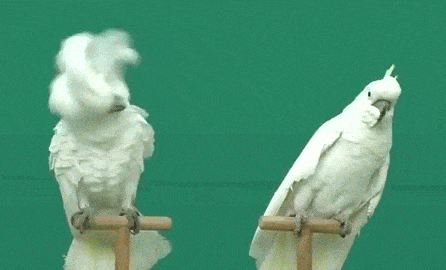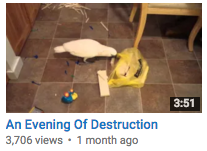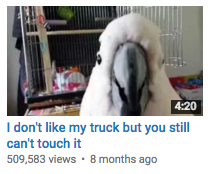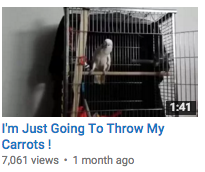Hummingbirds
Hummingbirds
Just a PSA for everyone!! With spring coming around and the humming birds migrating back in. I just want to warn everyone do NOT no matter what use the “premade” red humming bird food. The red dye in the food is causing seizures and death among the birds. Instead you can make your own! Just use 2 cups water and half cup sugar!
More Posts from Doves4life-blog and Others
did anyone see that video of the guy who was like “im really good at finding moles” and hes saying that hes gonna pull a mole right out of the ground and for a few seconds youre like ok whats the joke and then he just squats down to the grass and and jams his fist into the ground and pulls a mole up
i think about it so much

this is like so funny but terrifying¿ im laughing partially out of fear





this guy has the most difficult bird of all time but he loves him anyway
I recently got a diamond dove and I wanted to ask stuff beyond what I could find researching online: what will the first few weeks be like? Is there any effects a too small cage can have on the dove? (Bought the biggest I could with upgrades planned) when can I expect cooing if at all? Mine gain some weight/ looks fatter. Should I be worried/vet visit for that? And I haven't found much info on it- are there ways to hand train them? Or are they 100% against being touched and scritches? Thank you!
Diamonds are in the parrot boat of still being wild animals.
Their shorter maturation period has put them further along the path to domestication, but expecting unsocialized adults to accept being cuddled is asking too much of most of them.
Expect that it will be VERY quiet the first few weeks. Moving is harder on Diamonds than domesticated doves and it takes them a while to settle.
Once yours does, hand taming will be a VERY slow process. Diamonds are spooky and tiny and prone to panic, so don’t start until your interaction with its dishes or floor stops visibly scaring it.
When it’s at the point of ignoring your hands during feeding and maintainence, you can begin to very slowly reach for it from below.
This will take careful observation on your part, as you’ll need to withdraw again well before the Diamond EXPLODES into flight! At the first shift of its body away from your aproach, stop and withdraw.
It needs to learn that it can trust you to pick up on its discomfort and leave it be when it needs you to.
Eventually, it will lower its guard and let you get closer bit by tiny bit. When it does, try to touch its feet before anything else and coax it gently to step up and sit on your finger.
Diamonds being still basically wild means that they haven’t been adapted to confinement the way Pigeons and Ringnecks have. They need space to legitimately fly so that they don’t atrophy. And being too confined will make a neurotic mess of a Diamond!
Telling a fat diamond from a contentedly fluffy one is tricky without a gram scale.Average weight for an adult is about 32grams, which is less than a one week old Ringneck.
If the Diamond is poofballed, it may be ill or cold.
Diamonds can and do stress to death at the drop of a hat, so fiddle with the temperature and up its feed a little before you take it to the vet.
When traveling with a Diamond that hasn’t been trained for it, use either a dark box or a cloth carrier wrapped in a towel.Being in the dark is like an off button for birds. They automatically go to sleep, which negates a lot of the stress of travel.
I think one of the funniest things I’ve accidentally taught my parrot is yelling “WHAT?” The best part is that if he says something weird and and someone else says “what???” he usually repeats what he just said. Like just now, I was cooking in the kitchen and he heard me boiling water so he asked “you wanna noodle?” but I couldn’t quite hear him so I yelled “WHAT” and he repeated “you wanna noodle?”

Mostly he just likes yelling it, though.

Ohmergurd they did ta thing

Who’s brave enough to reblog or repost
-
 liketwoswansinbalance liked this · 1 month ago
liketwoswansinbalance liked this · 1 month ago -
 digitalmeowmix liked this · 4 years ago
digitalmeowmix liked this · 4 years ago -
 bat-anon liked this · 4 years ago
bat-anon liked this · 4 years ago -
 hardleywhelmed liked this · 4 years ago
hardleywhelmed liked this · 4 years ago -
 visionsbehindmyclosedeyelids reblogged this · 4 years ago
visionsbehindmyclosedeyelids reblogged this · 4 years ago -
 visionsbehindmyclosedeyelids liked this · 4 years ago
visionsbehindmyclosedeyelids liked this · 4 years ago -
 skelet0nc4ke liked this · 4 years ago
skelet0nc4ke liked this · 4 years ago -
 seaoflaceandruffles reblogged this · 4 years ago
seaoflaceandruffles reblogged this · 4 years ago -
 seaoflaceandruffles liked this · 4 years ago
seaoflaceandruffles liked this · 4 years ago -
 pliocene-palfrey reblogged this · 4 years ago
pliocene-palfrey reblogged this · 4 years ago -
 endlessllyspiralling liked this · 4 years ago
endlessllyspiralling liked this · 4 years ago -
 sinnamonrollkitten liked this · 4 years ago
sinnamonrollkitten liked this · 4 years ago -
 freekbugg reblogged this · 4 years ago
freekbugg reblogged this · 4 years ago -
 camarofemme reblogged this · 4 years ago
camarofemme reblogged this · 4 years ago -
 camarofemme liked this · 4 years ago
camarofemme liked this · 4 years ago -
 ishizukilover14 reblogged this · 4 years ago
ishizukilover14 reblogged this · 4 years ago -
 sentientjrpg liked this · 4 years ago
sentientjrpg liked this · 4 years ago -
 kat-thesweet-pea reblogged this · 4 years ago
kat-thesweet-pea reblogged this · 4 years ago -
 finder-of-rings reblogged this · 4 years ago
finder-of-rings reblogged this · 4 years ago -
 finder-of-rings liked this · 4 years ago
finder-of-rings liked this · 4 years ago -
 celestial-lens liked this · 4 years ago
celestial-lens liked this · 4 years ago -
 firstsonoffire reblogged this · 4 years ago
firstsonoffire reblogged this · 4 years ago -
 lucifergender reblogged this · 4 years ago
lucifergender reblogged this · 4 years ago -
 celluloidvillains reblogged this · 4 years ago
celluloidvillains reblogged this · 4 years ago -
 strawhatyaa liked this · 4 years ago
strawhatyaa liked this · 4 years ago -
 fixations-101 reblogged this · 5 years ago
fixations-101 reblogged this · 5 years ago -
 tru-reader reblogged this · 5 years ago
tru-reader reblogged this · 5 years ago -
 tru-reader liked this · 5 years ago
tru-reader liked this · 5 years ago -
 emilydick-in-son reblogged this · 5 years ago
emilydick-in-son reblogged this · 5 years ago -
 emilydick-in-son liked this · 5 years ago
emilydick-in-son liked this · 5 years ago -
 dakotashorror reblogged this · 5 years ago
dakotashorror reblogged this · 5 years ago -
 clamavipaucaslacrimas reblogged this · 5 years ago
clamavipaucaslacrimas reblogged this · 5 years ago -
 cripplinganxietybitch liked this · 5 years ago
cripplinganxietybitch liked this · 5 years ago -
 flying-ro1 reblogged this · 5 years ago
flying-ro1 reblogged this · 5 years ago -
 madsyyy reblogged this · 5 years ago
madsyyy reblogged this · 5 years ago -
 the-nerdy-bookworm reblogged this · 5 years ago
the-nerdy-bookworm reblogged this · 5 years ago -
 the-nerdy-bookworm liked this · 5 years ago
the-nerdy-bookworm liked this · 5 years ago -
 quillinkandmuse reblogged this · 5 years ago
quillinkandmuse reblogged this · 5 years ago -
 lukewarm-water liked this · 5 years ago
lukewarm-water liked this · 5 years ago -
 gloryfalling reblogged this · 5 years ago
gloryfalling reblogged this · 5 years ago